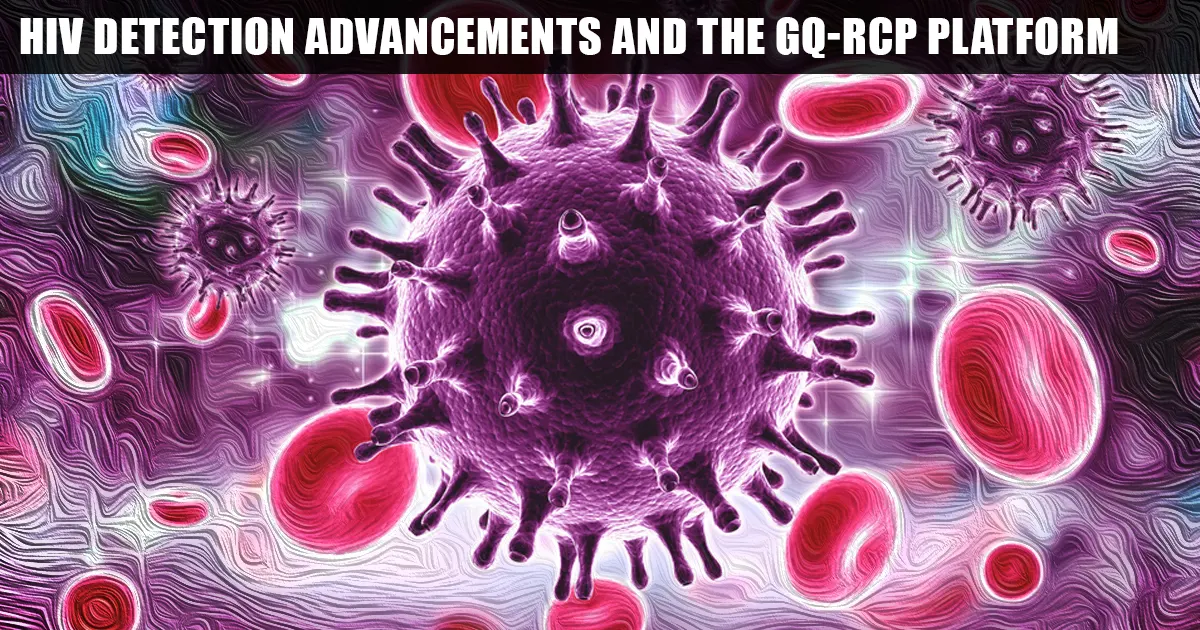
Why in News?
Researchers at the Jawaharlal Nehru Centre for Advanced Scientific Research (JNCASR) have developed an advanced diagnostic platform called GQ Topology-Targeted Reliable Conformational Polymorphism (GQ-RCP) for early and accurate detection of HIV. This innovation builds on technology used for SARS-CoV-2 diagnostics, reflecting India’s growing research capabilities.
Key Features of the GQ-RCP Platform
- G-Quadruplex (GQ) Structure
- The GQ is a unique four-stranded DNA conformation essential in gene regulation and genome stability.
- This property is leveraged to specifically detect HIV-derived DNA structures.
- High Specificity and Accuracy
- The GQ-RCP platform enhances diagnostic reliability by reducing false positives, a common issue with traditional detection methods.
- It uses a fluorometric test for targeted and precise detection.
- Detection Mechanism
- The process involves reverse transcription and amplification of a genomic segment.
- The amplified DNA transitions into the GQ conformation under controlled pH conditions, allowing accurate identification.
- Early Detection Capability
- The platform’s sensitivity ensures earlier HIV detection compared to conventional methods, potentially improving treatment outcomes.
HIV: An Overview
What is HIV?
- HIV (Human Immunodeficiency Virus) attacks the immune system, primarily targeting CD4 cells (a type of white blood cell).
- Without treatment, it progresses to AIDS (Acquired Immunodeficiency Syndrome), a severe condition marked by opportunistic infections and cancers.
Transmission
HIV spreads through bodily fluids such as blood, semen, vaginal fluids, and breast milk.
Current Treatment
- Antiretroviral Therapy (ART): Manages HIV by suppressing viral replication, enabling the immune system to recover. However, there is no cure for HIV.
HIV in India: Current Status
Prevalence
- As per NACO (2021), around 2.4 million people in India live with HIV, with a prevalence rate of 0.22% among adults.
- HIV prevalence is concentrated in high-risk groups like injecting drug users (5.91%) and female sex workers (2.61%).
Geographic and Demographic Trends
- High-Prevalence States: Northeast states (e.g., Mizoram 2.70%) and southern states (e.g., Andhra Pradesh 0.67%).
- Women and Children: Women constitute 39% of HIV cases, and children under 15 account for 3.5% of infections.
Government Initiatives on HIV
- National AIDS Control Program (NACP)
- Phases:
- Phase I (1992-1999): Awareness and surveillance.
- Phase II (1999-2006): Expanded targeted interventions and NGO involvement.
- Phase III (2007-2012): Scaled up interventions and partnered with civil society organizations.
- Phase IV (2012-2021): Integrated HIV services into public health systems.
- Phase V (2021-2026): Targets an 80% reduction in new infections and AIDS-related deaths by 2025-26 (compared to 2010 levels).
- Phases:
- HIV/AIDS Prevention and Control Act (2017)
- Protects the rights of people living with HIV, ensuring access to treatment and freedom from discrimination.
- International Partnerships
- Collaborates with organizations like UNAIDS, WHO, and private entities (e.g., Bill & Melinda Gates Foundation) for technical and financial support.
Significance of Advancements like GQ-RCP
- Early Diagnosis
- Improved early detection enables timely ART initiation, preventing disease progression and transmission.
- Enhanced Healthcare Accessibility
- The innovation aligns with India’s public health goals, making diagnostics more affordable and accurate.
- Global Contributions
- Strengthens India’s position as a leader in innovative medical research and diagnostics technology.
Way Forward
- Adoption of GQ-RCP Technology: Integration into national HIV testing programs to improve diagnostic outcomes.
- Increased Awareness: Campaigns to encourage early testing and reduce stigma around HIV.
- Strengthening Healthcare Infrastructure: Enhanced ART facilities and comprehensive care for people living with HIV.
India’s efforts in combating HIV/AIDS, complemented by advancements like the GQ-RCP platform, signify progress toward achieving the 2030 Sustainable Development Goal of ending the AIDS epidemic.




